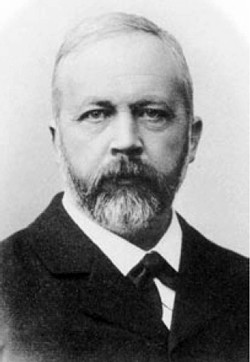I normally post on matters in my areas of expertise, namely, late 2nd Temple Judaism and earliest Christianity in the Greco-Roman period (“Augustus to Constantine” as my revered Chicago Professor Robert M. Grant so succinctly put things). Still, as a “Biblical scholar” academic issues in the study of the Hebrew Bible are of great interest to me. It is difficult to draw chronological “border lines” when it comes to biblical studies. How we read and view sources from the Ancient Near East–biblical or otherwise–has great influence on how we understand the subsequent development of “Judaisms” (including the Jesus movement) in the 1st century CE.
 The so-called “Documentary Hypothesis,” classically represented in the formulation of Julius Welhausen in 1882, argued that the Torah or Pentateuch, traditionally referred to as the “Five Books of Moses” contained four distinct literary sources–traditionally designated as Yahwist, Elohist, Priestly and Deuteronomist (JEPD)–stemming from different times and different authors–woven skillfully together by a final “redactor” or author. That there are distinct sources that make up the Torah or Pentateuch is hardly in dispute among academics but in conservative Jewish and Christian circles Wellhausen’s work has been cast as a threat to the traditional view of the “Mosaic” authorship of the Torah. Richard Friedman’s immensely popular books, including Who Wrote the Bible? and The Bible with Sources Revealed: A New View into the Five Books of Moses have presented the main contours of Wellhausen’s hypothesis to a mass of the general public. I highly recommend anyone interested in biblical studies, no matter what ones presuppositions might be, to read Friedman’s work carefully. Click here for a PDF chart showing Friedman’s main breakdown of the sources.
The so-called “Documentary Hypothesis,” classically represented in the formulation of Julius Welhausen in 1882, argued that the Torah or Pentateuch, traditionally referred to as the “Five Books of Moses” contained four distinct literary sources–traditionally designated as Yahwist, Elohist, Priestly and Deuteronomist (JEPD)–stemming from different times and different authors–woven skillfully together by a final “redactor” or author. That there are distinct sources that make up the Torah or Pentateuch is hardly in dispute among academics but in conservative Jewish and Christian circles Wellhausen’s work has been cast as a threat to the traditional view of the “Mosaic” authorship of the Torah. Richard Friedman’s immensely popular books, including Who Wrote the Bible? and The Bible with Sources Revealed: A New View into the Five Books of Moses have presented the main contours of Wellhausen’s hypothesis to a mass of the general public. I highly recommend anyone interested in biblical studies, no matter what ones presuppositions might be, to read Friedman’s work carefully. Click here for a PDF chart showing Friedman’s main breakdown of the sources.
Now, over a hundred years after Wellhausen one often hears among conservatives the assertion that Wellhausen’s “Documentary Hypothesis” is dead–as if to imply that most mainstream biblical scholars repudiated its basic contours. Such is certainly not the case. I wanted to recommend a particularly perceptive and well-documented blog post on this very question by David Bokovoy titled “The Death of the Documentary Hypothesis.” It goes a long way toward setting the record straight as to the actual state of the question in responsible academic circles today. I recommend a careful reading to my students and my blog readers. Thank you David for putting this together for us all.


